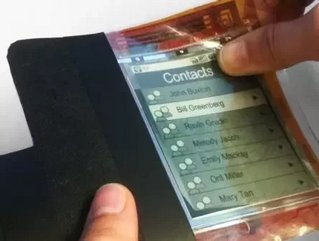University Scientists Develop Flexible Smartphone

Scientists from the Human Media Lab at Queen’s University have developed innovative new smartphone technology creating a prototype called “Paperphone.”
With capabilities to store books, play music and make phone calls, this technology is able to function exactly like a smartphone and is speculated to make current smartphone technology obsolete in five to ten years.
“This is the future. Everything is going to look and feel like this within five years,” says creator Roel Vertegaal, the Director of Queen’s University Human Media Lab. “This computer looks, feels and operates like a small sheet of interactive paper. You interact with it by bending it into a cell phone, flipping the corner to turn pages, or writing on it with a pen.”
The Paperphone display is made of a 9.5 cm diagonal thin film flexible ink. Its size and flexibility makes it easily portable by fitting perfectly in a pocket, a humongous advantage to current mobile computer technology.
The technology also improves energy efficiency. When not in use, the technology doesn’t use any power. Also, Queen’s University sees the Paperphone’s ability to store and interact with documents on larger versions of the display to allow offices to go paperless.
“The paperless office is here. Everything can be stored digitally and you can place these computers on top of each other just like a stack of paper, or throw them around the desk” says Dr. Vertegaal.
SEE RELATED STORIES FROM THE WDM CONTENT NETWORK:
Click here to read the latest edition of Business Review Canada
This invention can be easily seen as the beginning of a new generation of computers that will be super lightweight and flexible. Users, when interacting with the computer, say that it doesn’t feel like they’re holding either glass or metal.
Dr. Vertegaal plans to unveil this new technology at the CHI 2011 conference in Vancouver on May 10th.






